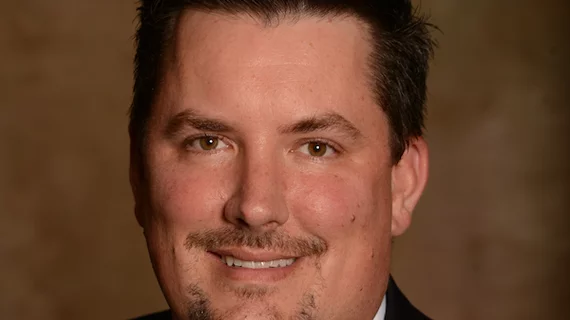Jefferson Health, AHRA exec on medical device tariffs and the ‘commoditization’ of imaging
President Donald Trump recently signed an executive memo imposing tariffs on Chinese imports, including many imaging-related devices. Estimates claim the impact on the device industry may range from $1.5 billion to $5 billion a year.
Imaging has also been the focus of headlines as several hospitals have filed lawsuits against Anthem’s new outpatient imaging and emergency department (ED) reimbursement policies. Chris Tomlinson, VP of enterprise radiology at Philadelphia’s Jefferson Health and finance chair at the Association for Medical Imaging Management (AHRA), spoke with HealthImaging about these issues—and why what he calls the “commoditization” of imaging may be at the heart of the problem.
HealthImaging: What can you tell us about the proposed tariffs and their potential impact on imaging?
Chris Tomlinson: There’s a little time before those tariffs go into place, and we’re trying to assess what they mean. Depending on the final ruling, will General Electric (GE), for example, which is based in the U.S. with scanners made in China, get taxed on those devices? Will its magnets be taxed or only companies headquartered in China?
This has the potential to increase cost of care. The government keeps saying the cost of care is too high, but a tariff on devices will add to that cost. That will get charged to the consumers, the employers through their insurance plans and insurance carriers. It doesn’t potentially hurt only the Chinese company, but competition and overall cost of care.
There was a recent NPR story about a patient’s $268 charge for a CT scan in a Florida imaging facility, and three months later the patient was billed nearly $9,000 for the same scan in the ED. Why is that happening?
Tomlinson: As people continue to bear a higher percent of their healthcare costs out-of-pocket, they are becoming much more attentive to pricing. The idea that imaging is a commodity is dangerous.
An outpatient imaging center that doesn’t have top equipment and no sub-specialized radiologists isn’t on par with a large academic medical center with sub-specialized radiologists and the latest technology. I think there’s a dangerous commoditization that’s happening right now in imaging where people are assuming MRIs are all the same. But, if you think about a .3 Tesla magnet versus a 3 Tesla magnet, that’s a massive difference.
If you take that, plus reimbursement pressures with Medicare and some payers trying to steer volume with the Anthem initiative and radiology benefit managers (RBMs), it’s challenging imaging leaders to differentiate themselves. If you have a health problem, a study is ordered and diagnosed. That’s much cheaper than showing up in the ED and trying to resolve the issue on an emergent basis. There’s a major difference to admitting someone to the hospital after they get worse compared to if it was caught earlier through imaging and managed at a lower cost.
You mentioned Anthem. More hospitals are joining the suit against them. Some argue it is granting exceptions to hospitals that accept lower rates and that its imaging policy will hurt patient care. What are your thoughts?
Tomlinson: I think there’s some truth on both sides. Some places, especially if they have a monopoly in the market, charge higher rates, and the consumer doesn’t have much choice. In large metropolitan areas, there are many options, as opposed to a rural setting.
Anthem allowed for that, but I think the challenge is that Anthem is trying to say MRIs are all the same—and again, for basic studies, that argument might stick. But if you force the higher cost hospitals out of the market, who is going to do those more difficult studies that require more resources? You really have to have both venues.
The Deficit Reduction Act of 2005 basically smacked the outpatient imaging centers and gave them a very low reimbursement rate. That consolidated the market. It forced a lot of players out and now the pendulum is swinging back the other way. The problem with Anthem is it tries to make allowances for those, but it sends a message that everyone should go to the independent diagnostic testing facilities for most outpatient studies, and again, that’s an over simplistic view of the complexity of care.

